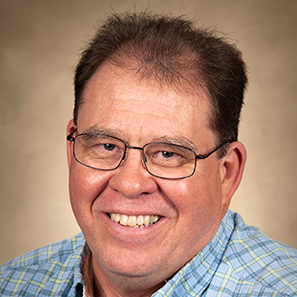
Robert Findlay
Professor Emeritus
Research Interests
Three major themes or interests link my research activities. These are the community and ecosystem ecology of microorganisms, the applied ecology of microbial communities and the development of methods for the determination of microbial biomass, activity, community structure and trophic interactions. My laboratory’s research spans independent and collaborative efforts.
My major focus is on aquatic microbial communities and their role within ecosystems, first in marine sediments and more recently in freshwater and groundwater sediments; the Deepwater Horizon oil spill has seen a return of my marine efforts. I have often investigated factors that control the distribution and abundance of microorganisms and structure their communities. Factors include predation, light, flow, food resource, temperature, and sediment disruption. Several of the factors (light, temperature and predation) combine to produce a seasonal pattern of change in benthic microbial community structure. My current efforts are funded by a NSF grant and are focused on the phenomenon of 'priming' – that is increased activity of decomposers when provided labile organic carbon. This effect has been widely studied in terrestrial systems but until recently has not been studied in aquatic systems. This collaborative effort focuses on the degradation of Typha leaves in marshes and utilizes stable isotope probing.
I include studies of the impacts of human society on the environment among my research activities. Studies have included organic pollution and bacterial contamination in groundwater, effects of fishing activity on marine sediments, introduction of drilling fluids in the marine environment, the environmental impacts of salmonid net-pen culture in both marine and freshwater systems and various aspects of lipophilic pollutants in marine and freshwater systems. Most recent efforts have been directed toward the impacts of the Deepwater Horizon oil spill in coastal Alabama.
Throughout all the described projects, effort is directed toward the development, evaluation and application of state-of-the-art biogeochemical and microbiological methods. Past efforts include detection of bacterial cell wall components as a measure of bacterial biomass, detection of phospholipid as a measure of microbial biomass, quantification of the bacterial storage lipid polymeric beta-hydroxyalkanoates as a measure of nutritional status, measuring the rate of incorporation of 14C-labeled substrates into structural and storage lipids as a determination of activity and nutritional status and the use of phospholipid fatty acid analysis to quantify microbial community structure. All these efforts were directed toward complex sedimentary communities. In addition, I have investigated using the response of microbial communities to detect nutrient enrichment, anthropogenic stress and have adapted the phospholipid method to simultaneously determine lipophilic pollutant concentration. Current method development efforts include application of compound-specific stable isotope ratios of fatty acids to both foodweb analysis and organic matter utilization using the recently acquired stable isotope mass spectrometer. A MS current student is expanding this research to include 15N studies of amino acids to further elucidate the trophic structure of ecosystems.
Opportunities for undergraduate and graduate research in my laboratory are open to any of the above questions or to new questions supported by the array of techniques available within the laboratory.
Selected Publications
- Dharampal, PS, RH Findlay. 2017. Mercury levels in largemouth bass (Micropterus salmoides) from regulated and unregulated rivers. Chemosphere 170: 134-140
- Jenny MJ, Walton WC, Payton SL, Powers JM, Findlay RH, O’Shields B, Diggins K, Pinkerton M, Porter D, Crane DM, Tapley J, Cunningham C (2016) Transcriptomic evaluation of the American oyster, Crassostrea virginica, deployed during the Deepwater Horizon oil spill: Evidence of an active hydrocarbon response pathway. Mar Environ Res 120:166
- Storey, JME, MC Bunce, JW Edmonds, EM Clarke, RH Findlay, SMC Ritchie, L Eyers; ZA McMurry, JC Smoot. 2016. Pollutant emissions and environmental assessment of ethyl 3-ethoxybutyrate, a potential renewable fuel. Environmental Science and Pollution Research DOI 10.1007/s11356-016-7052-z
- Wiegner, T.N., L.A. Kaplan, S.E. Ziegler, and R.H. Findlay. 2015. Identifying heterotrophic microbes responsible for terrestrial dissolved organic carbon uptake within stream water-fed bioreactors: a stable isotope approach. Aquatic Microbial Ecology 75: 225-237
- Bunce, MC, JME Storey, JW Edmonds, RH Findlay, SMC Ritchie, L Eyers, ZA McMurry, JC Smoot. 2015. Ethyl 3-Ethoxybutyrate, a New Component of the Transportation Renewable Fuel Portfolio. Fuel 161:262–268.
- Findlay RH, Battin TJ. 2015. The Microbial Ecology of Benthic Environments, p 4.2.1-1-4.2.1-20. In Yates M, Nakatsu C, Miller R, Pillai S (ed), Manual of Environmental Microbiology, 4th Edition. ASM Press, Washington, DC. doi: 10.1128/9781555818821.ch4.2.1
- Akinwole, PO, Lefevre, E, Powell, MJ, Findlay, RH. 2014. Unique Odd-Chain Polyenoic Phospholipid Fatty Acids Present in Chytrid Fungi. Lipids (DOI: 10.1007/s11745-014-3934-3)
- Kuehn, K.A., Francoeur, S.N., Findlay, R.H., Neely, R.K. 2014. Priming in the microbial landscape: Periphytical algal stimulation of litter-associated microbial decomposers. Ecology: Ecology 95:749–762. http://dx.doi.org/10.1890/13-0430.1
- Converse, B., Wu, T., Findlay, R,. Roden, E. 2013. U(VI) reduction in sulfate-reducing subsurface sediments amended with ethanol or acetate. Applied and Environmental Microbiology 79:4173-4177.
- Rypel, A.L., K.M. Pounds, and R.H. Findlay. 2012. Behavioral trade-offs drive habitat selection by bluegill in riverine landscapes. Ecosystems 15: 555-563.